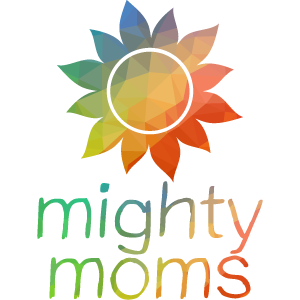Create A Postpartum Plan

Guest article provided by: birthyoudesire.com
Everyone in a pregnant family knows what a birth plan is, in fact, you probably wrote one in your birth class. But what about a postpartum plan? The postpartum period lasts even longer than birth and is equally critical if not more important. By setting the family up for a safe and supportive recovery, bonding and feeding will be easier and smoother.
The immediate postpartum period
Delay unnecessary procedures for the first hour if possible. This time is called the ‘Golden Hour’ as it is critical for helping your baby transition from the uterus to the outside world. Instead, use this time for skin-to-skin bonding. Skin to skin is critical for both the baby and the laboring person. In the first hour, babies pass through multiple stages of activity and rest. Skin to skin increases oxytocin levels and stabilizes infant glucose levels. It also keeps the baby warm and exposes the baby to healthy skin bacteria which colonizes the baby to develop a healthy immunity.
Babies will initiate the breast crawl towards the breast during this time for breastfeeding. Feeding will typically take 20-30 minutes taking up the first 60-90 minutes of life. Ideally, once the baby has been fed routine procedures can take place. At around 2 hours the baby will fall into a deep sleep for 2-6 hours. For babies that are not being breastfed, a bottle can be introduced at this time.
Delaying the infant bath, for 12-24 or even 72 hours. This is an effective strategy to help establish breastfeeding. Even if your baby is not brown covered in vernix, they will still have it on their skin from the amniotic water. Washing your baby means washing off the vernix. Vernix is a sophisticated biofilm. It is anti-bacterial, anti-fungal, and thermoregulating keeping the baby safe and warm. Vernix also smells like colostrum. So, every time baby smells or sucks their hands, they are triggered to nurse.
Rooming-in is another great strategy to support bonding and breastfeeding. When the baby is in the room with you it is easier to respond to their cries and hunger cues. The faster you respond to your baby, the faster they will calm down and learn to trust that you will always come to them.
Ask for a visit from the lactation consultant each day that you are at the hospital or as needed when home. The lactation consultant can help you to find the best positions for the two of you. They can check the baby’s latch and teach you tricks to minimize pain and maximize feedings. Baby’s stomachs are very small at birth and grow daily. Babies are also born with extra fluid that they process in the first few days of life. So, knowing what to look for in feeding or in diaper quantities can help you to demystify breastfeeding concerns.
The postpartum period at home
Create one to two safe calm spaces with a nursing station where you and your baby can stay together without distractions. Consider soft lighting, a comfortable place to sit and nurse, an ottoman, snacks, and water. By reducing distractions like the phone and having food handy it is easier to sit and give both you and the baby the time you need to nurse and bond.
A community of support to help take care of the family so that they can focus on fuel and sleep. In many cultures new families are never alone, rather they are being taken care of by family and friends. If you do not have a network of support, postpartum doulas can fill many needs with light housecleaning, food prep, feeding support, swaddling techniques, sleep training, and many more things. On the other hand, too many visitors can create stress. Finding balance is key in all things, but especially during postpartum.
Belly binding can be a great tool to help you feel like yourself and support your recovery body as you move around. Binding can help to protect your back and help your Diastasis recti to heal quickly. Binding is not recommended 24/7 rather is best when used in combination with exercises or when walking after birth.
Physical or occupational therapy can help assist you in recovery and learning new body mechanics as you walk and carry your baby. Just like in pregnancy, pain is not normal. So, if you are experiencing pain get a referral to see a professional. TENS units can assist with healing too! Common issues like back pain, nursing shoulder, and scar healing can be accelerated by using a TENS unit postpartum.
Avoid pacifiers for the first 4-6 weeks or until breastfeeding is well established. Pacifiers can be helpful with specific babies but speak with your lactation consultant first about your unique situation.
Pump a bottle. Pumping will give you the freedom to take a long nap or get out by yourself. It also gives your partner the ability to bond and learn with their child. This is a gift for you and them.
Infant massage is a great comforting skill for any parent or caregiver. It does not require breasts or bottles and can be done anywhere at any time. I recommend the partner does both the bath and follow it with infant massage before the final night feed. Babies thrive with schedules and expectations. So, the nightly habit of bath and massage can set the baby up for a great feed and bedtime. Getting you better sleep too!
I hope these postpartum plans are helpful for you. That they help you to reduce stress and remind you to be gentle with yourself. Postpartum recovery is not a two-week process.
